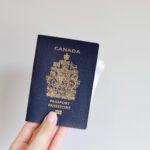Pathway to the Maple Leaf: A Comprehensive Guide to the Canada Immigration Process
Canada has multiple immigration pathways for individuals who wish to settle there permanently. Below is a general list of steps for most immigration processes, but please note that the specific steps can vary depending on the immigration program:
Research Immigration Programs:
There are several immigration programs in Canada, and you’ll need to find out which one suits your situation best. These include the Federal Skilled Worker Program, Federal Skilled Trades Program, Canadian Experience Class, Provincial Nominee Programs, and Family Class Sponsorship.
Check Eligibility:
Once you’ve chosen a program, you must meet the eligibility requirements. These include language skills, work experience, financial means, etc.
Prepare Documentation:
The documentation required for the Canada immigration process will depend on the specific immigration program you’re applying for. However, here are some of the commonly required documents for most immigration pathways:
- Identity and Civil Status Documents: These include birth certificates, passports, national identity cards, marriage certificates, divorce decrees, etc.
- Police Certificates: You’ll need to provide police certificates for each country where you’ve lived for six months or longer since you were 18. This is to verify whether you have a criminal record.
- Proof of Work Experience: This could include reference letters from your employers, pay stubs, tax documents, etc. Ensure these documents clearly outline your job title, duties, duration of employment, and hours worked per week.
- Educational Credentials: Depending on the immigration program, you may need to provide proof of your academic credentials. This could involve diplomas, degrees, transcripts, etc. Sometimes, you might need to have your credentials assessed and verified by a designated organization.
- Language Test Results: For many immigration programs, you’ll need to demonstrate proficiency in either English or French. This usually involves taking a test administered by an approved agency, such as IELTS, CEL PIP, TEF or any others authorized by the government, and submitting your results.
- Financial Proof: You may need proof that you have sufficient funds to support yourself (and your family, if applicable) when you arrive in Canada, unless you can legally work in Canada or have a valid job offer from a Canadian employer.
- Medical Exam Results: Depending on your situation, you may need a medical exam to prove you’re healthy.
- Photos: You must provide pictures that meet the requirements for immigration applications.
- Forms: There will be several forms to fill out that are specific to the immigration program you’re applying for. Ensure that these are all filled out correctly and honestly.
Submit an Application:
Depending on the program, you might need to enter the Express Entry pool, apply directly to a province or territory, or submit a paper application to Immigration, Refugees and Citizenship Canada (IRCC).
Wait for Invitation to Apply (ITA):
If you’re in the Express Entry pool, you must wait for an ITA. The highest-ranking candidates are invited to apply for permanent residence.
Apply for Permanent Residence:
Once you receive an ITA, or if you are applying directly to a program, you must complete and submit an application for permanent residence.
Pay the Required Fees:
Fees include processing fees for you and anyone you have on your application. There might also be a right of permanent residence fee (RPRF), biometrics fee, etc.
Wait for a Decision:
Processing times can vary depending on the program and where you are applying from. During this time, IRCC may request additional documents or an interview.
Prepare to Move:
If your application is approved, you will receive a Confirmation of Permanent Residence (COPR) and/or a permanent resident visa (if you’re from a country that requires a visa to enter Canada). You should then prepare for your move to Canada.
Become a Permanent Resident:
When you arrive in Canada, you will meet with an immigration officer who will verify your documents and ask you a few questions to ensure you still meet the requirements for immigration to Canada. You will be granted entry as a permanent resident if everything is in order.
This is a general guideline. Your process might differ depending on the program you’re applying to and your circumstances. Refer to the official Government of Canada website or consult a trusted immigration advisor or lawyer for the most accurate and updated information.





